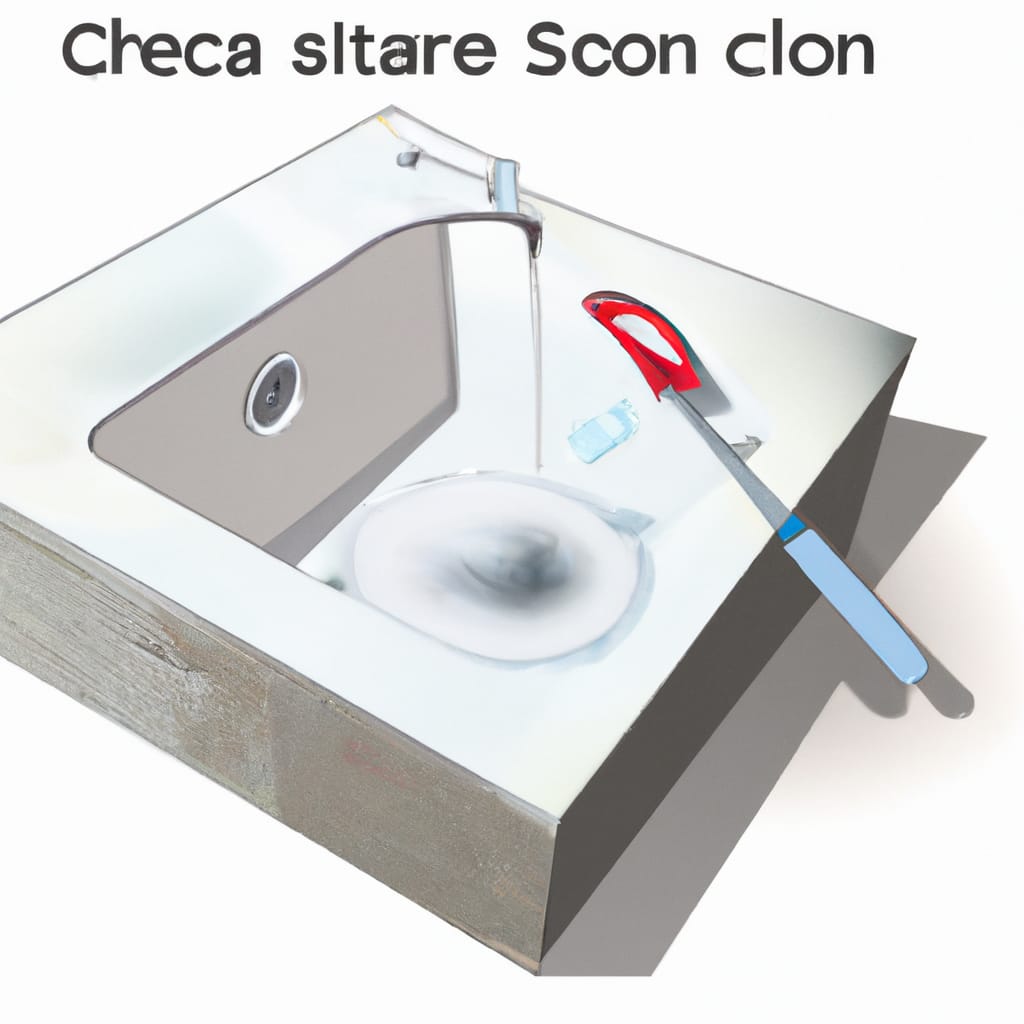Having a stone kitchen sink is a great addition to any kitchen, as it adds a luxurious feel and look. However, the stone material requires special cleaning and maintenance to keep the sink looking as good as new. In this article, we will discuss the best way to clean and maintain your stone kitchen sink, so you can make sure it will look beautiful for years to come. With a few simple steps, you will be able to keep your kitchen sink sparkling and spotless. So, if you’re ready to learn the best way to take care of your stone kitchen sink, read on!

A quick overview on how to clean a stone kitchen sink
Cleaning a stone kitchen sink is not so easy because the surface of stone is porous, and dirt and bacteria can build up in the crevices. In this article, I will show an impressive way to clean a stone kitchen sink using natural ingredients such as baking soda, vinegar, and lemon juice. This method is easy and effective for removing dirt and bacteria and restoring the sink to its original shine.
What to use to clean a stone kitchen sink?
Cleaning a stone kitchen sink is an important part of regular kitchen maintenance. To ensure that the sink is cleaned properly and safely, it is important to use the right materials and tools. Essential cleaning equipment includes a soft sponge, a non-abrasive scrubber, a mild soap, and a soft cloth.
Using a soft sponge is important to avoid scratching the stone surface of the sink. A non-abrasive scrubber can be used to remove any stubborn dirt or debris. A mild soap will help to sanitize the sink and remove any bacteria. Finally, a soft cloth should be used to dry the sink after cleaning to avoid water spots. All of these materials and tools are essential to properly and safely clean a stone kitchen sink.The process to clean a stone kitchen sink step by step
First, you will need to gather the supplies needed for the job. Gather a sponge, cleaner, non-abrasive scrubbing pad, and a clean cloth or towel. Next, you will need to make sure that the sink is free of food particles and debris. Rinse the sink down with warm water. If there are any stubborn food particles, fill the sink with a few inches of warm water and add a few drops of dish soap. Allow the sink to sit for a few minutes so that the food particles can soften and then scrub them off with a non-abrasive scrubbing pad. After that, you can begin cleaning the sink with the cleaner. Apply the cleaner to the sink and spread it around with a sponge. Allow the cleaner to sit for a few minutes before scrubbing it off with a non-abrasive scrubbing pad. Make sure to get into the crevices and corners of the sink. If the sink is especially dirty, you may need to repeat this step more than once. Once the sink is clean, rinse it down with warm water.
Finally, you can dry the sink off with a clean cloth or towel. Additionally, you may want to apply a stone sealer to the sink to help protect it from future staining. This is especially important if you have a stone sink. Allow the sealer to dry completely before use. With regular cleaning and proper care, your stone sink will stay looking beautiful for years to come.Frequently Asked Questions
What products should I use to clean a stone kitchen sink?
For cleaning a stone kitchen sink, it is best to use mild, non-abrasive products such as a gentle dish soap, baking soda, or a mild liquid detergent. For stubborn stains, a paste of baking soda and water can be applied to the surface and left to sit for a few minutes before scrubbing with a soft cloth or sponge. To remove any soap residue, rinse with warm water and dry with a soft cloth. For daily cleaning, a gentle spray cleaner, such as vinegar and water, can be used to remove dirt and grime. To prevent staining and discoloration, it is important to avoid using any abrasive cleaners, bleach, or ammonia. Additionally, it is important to seal the stone periodically to protect it from staining and discoloration.
What techniques should I use to clean a stone kitchen sink?
To clean a stone kitchen sink, the following techniques are recommended. First, rinse the sink with warm water to remove any dirt or debris. Next, use a soft cloth or sponge and an all-purpose cleaner to scrub the sink and remove any stains. Rinse the sink again to remove the cleaning solution. For tougher stains, mix a paste of baking soda and water and apply to the affected area. Allow the paste to sit for a few minutes, then scrub with a soft brush. Finally, rinse the sink with warm water and wipe it dry with a clean cloth. To prevent future staining, it is recommended to apply a sealant to the sink.
What steps should I take to ensure a thorough cleaning of a stone kitchen sink?
1. Begin by cleaning the sink with a non-abrasive cleaner and a soft, damp cloth or sponge. 2. Rinse the sink thoroughly with warm water and a clean sponge. 3. For stubborn stains, mix a paste of baking soda and water. Apply to the stain and scrub with a soft brush or cloth. 4. To remove watermarks or discoloration, use a soft cloth and rubbing alcohol. 5. To disinfect the sink, use a mild bleach solution and a clean cloth. 6. Rinse the sink with warm water and dry with a soft cloth. 7. For a deep clean, apply a poultice paste made from equal parts baking soda and hydrogen peroxide. Let the paste sit for 24 hours and then rinse with warm water. 8. Finally, to help protect the sink’s surface, apply a sealant and buff with a soft cloth.




